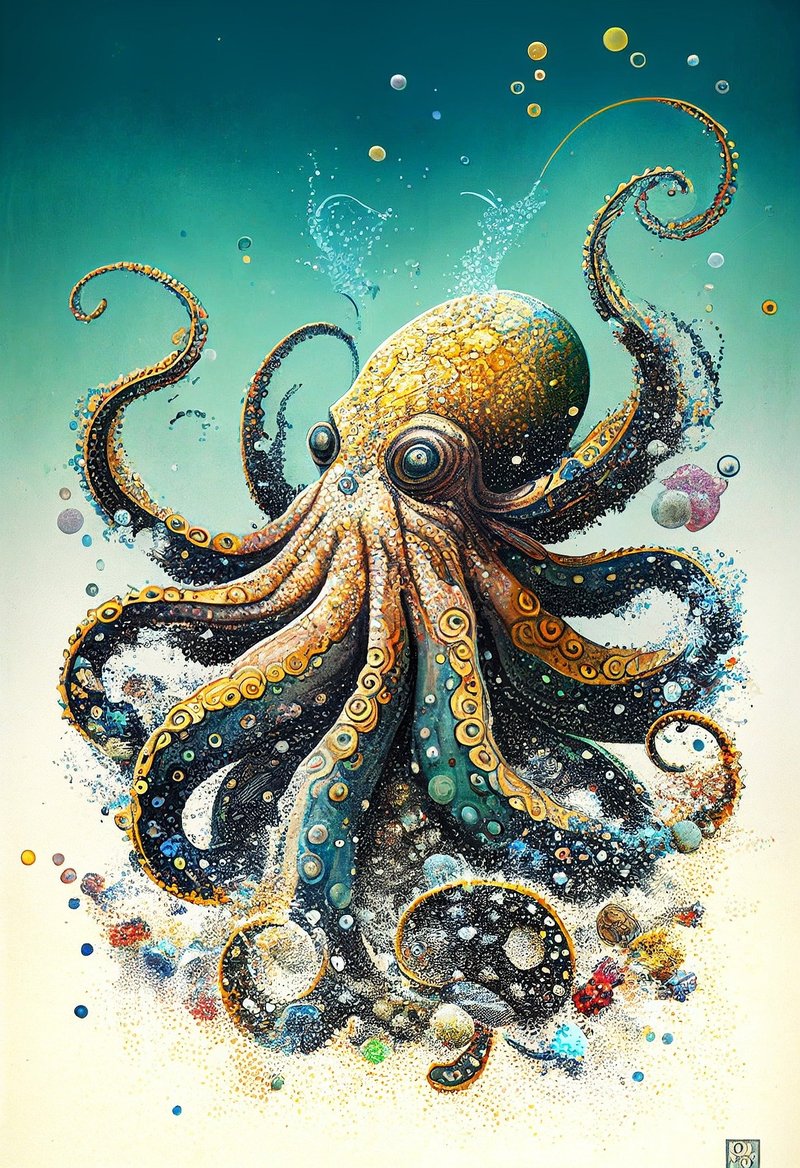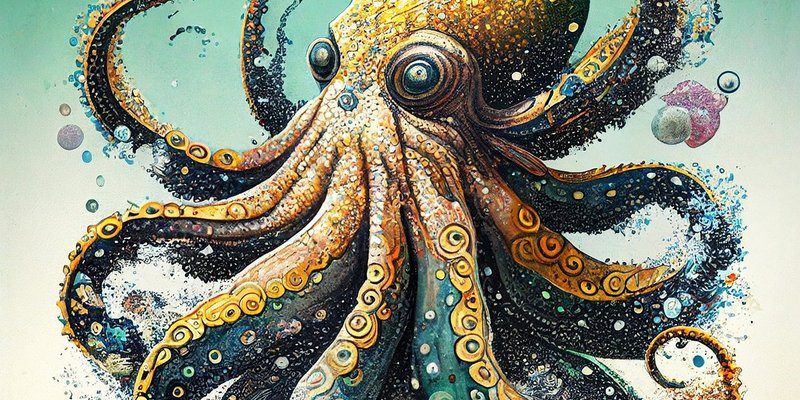
While you sip your coffee, let’s dive into what makes this octopus so special—both in nature and in our stories. From ancient folklore to modern-day beliefs, the Giant Pacific Octopus has woven its way through various narratives. The stories we tell about them can reveal quite a bit about how we view the natural world and the mysteries it holds.
The Giant Pacific Octopus: A Quick Overview
If you’re wondering what exactly the Giant Pacific Octopus is, here’s the breakdown. As the largest species of octopus, it can weigh over 110 pounds and measure up to 16 feet from tip to tip. Living in the chilly waters of the North Pacific, these creatures are often found hiding in rocky crevices or exploring the ocean floor. They are masters of disguise, capable of changing color and texture to blend in with their surroundings.
Beyond their impressive physical attributes, what makes the Giant Pacific Octopus truly remarkable is its intelligence. Known for their problem-solving skills and curiosity, these octopuses can manipulate objects and even escape from enclosures. Just imagine a pet that can not only recognize you but can also open jars and solve puzzles!
Myths Surrounding the Giant Pacific Octopus
Throughout history, the Giant Pacific Octopus has been the subject of various myths and legends across different cultures. In many coastal communities, they’re often seen as symbols of mystery and the unknown. For example, in certain Pacific Island cultures, they are revered as guardians of the sea, believed to possess supernatural powers. These myths often reflect humanity’s deep respect and awe for the ocean’s vastness.
In contrast, some legends paint a more ominous picture, depicting the octopus as a fearsome creature that could drag unsuspecting sailors down into the depths. This fear likely stems from their size and the dramatic way they can change their appearance, making them seem almost otherworldly.
Storytelling has a significant role in how we perceive animals, and the Giant Pacific Octopus is no exception. The tales we’ve built around them help us to connect with and understand our environment, even if the stories are a bit exaggerated.
Cultural Beliefs and Symbolism
In many cultures, the Giant Pacific Octopus symbolizes adaptability and intelligence. Because of their ability to change color and texture, they represent the idea of transformation. For instance, in Japanese culture, octopuses are often featured in traditional art and folklore, embodying the concept of mastering one’s environment and adapting to challenges.
There’s a certain gracefulness associated with these creatures—an elegance that can also be found in their movement through water. This has led to various interpretations in art, literature, and even tattoos, where people express the octopus as a symbol of fluidity and creativity.
Another fascinating aspect is how they are viewed in culinary traditions. In many cultures, the octopus is considered a delicacy, symbolizing richness and a connection to the ocean. The way it’s prepared—grilled, marinated, or even served raw—shows the deep reverence people have for this intricate creature.
Misunderstandings About Their Behavior
With all the splendor surrounding the Giant Pacific Octopus, misunderstandings also abound. One common belief is that they are aggressive and hostile creatures. While they can defend themselves when threatened, these octopuses are generally more curious than combative. If you ever get a chance to see one in an aquarium, you might notice how they interact with visitors—often playfully.
Another misconception is that they are solitary creatures that never bond with others. Though they are mostly solitary, research has shown that Giant Pacific Octopuses can exhibit social behavior, especially during mating. They can communicate with each other through color changes and body language, which is a beautiful aspect of their life that is often overlooked.
Understanding their behavior offers an insight into their intelligence. Rather than simply being viewed as monsters from the deep, they deserve recognition for their complexity and emotional depth.
Impact of Media and Pop Culture
Rain or shine, movies and documentaries often showcase the Giant Pacific Octopus as a prominent character of the ocean. From thrilling underwater chase scenes to poignant moments in documentaries, these incredible animals have made their mark. Stories like *Finding Dory* and *My Octopus Teacher* have not only entertained us but also sparked curiosity about marine life.
In many films, the Giant Pacific Octopus is depicted as a mystical creature that either helps or hinders the protagonist. This portrayal can reinforce the mythical status surrounding them, making them seem larger than life. While those stories are captivating, it’s essential to differentiate between fiction and the reality of their existence in the wild.
These representations can influence people’s perceptions of octopuses. They can spark interest in marine biology or conservation efforts, leading to a better understanding of the ecosystems that support these fascinating creatures.
The Role of Conservation in Changing Beliefs
As we continue to learn more about the Giant Pacific Octopus and their habitats, conservation efforts become vital. Many of the myths surrounding them can harm their image. When people see them as fearsome beasts, it can lead to apathy towards their protection. However, when we share information about their intelligence and role in the ecosystem, we can shift those beliefs toward respect and appreciation.
Organizations dedicated to marine conservation work hard to educate the public on the importance of protecting these animals and their habitats. By focusing on the science behind their behavior, we can replace myths with facts, fostering a deeper respect for the Giant Pacific Octopus.
Participating in local conservation efforts, whether through beach clean-ups or educational workshops, can help reshape the narrative. The more we know and share about them, the more we can drive positive change.
In the end, the Giant Pacific Octopus is more than just a creature of legend; it’s a symbol of the mystery and wonder of the ocean. The myths and cultural beliefs surrounding them tell us not only about the octopus itself but also about humanity’s relationship with nature.
As we continue to explore and learn more about these remarkable animals, let’s embrace the stories while contributing to a more informed and respectful understanding. After all, the ocean is filled with wonders waiting to be discovered, and the Giant Pacific Octopus is just one of its many intriguing inhabitants.

